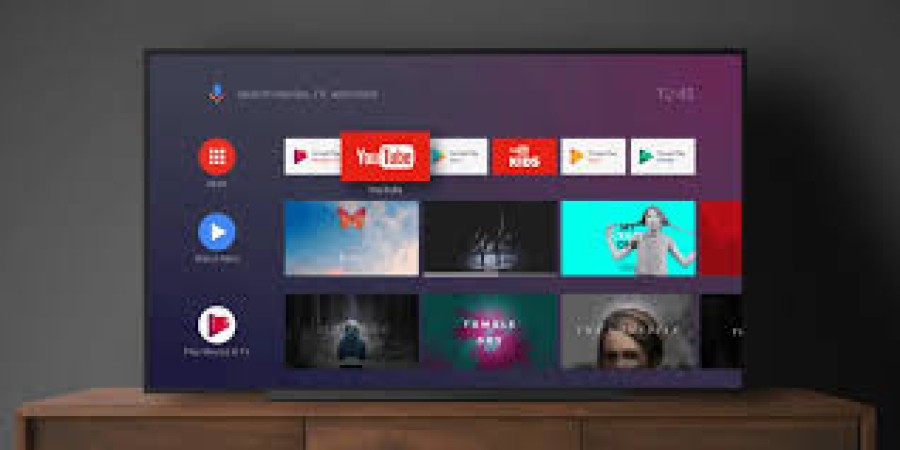IoT Development: Freelance Opportunities
The Internet of Things (IoT) is no longer just a futuristic concept — it is a powerful force shaping modern industries, from smart homes and wearable tech to agriculture and healthcare. As more devices become interconnected, the demand for IoT solutions is skyrocketing. And with this demand comes a significant rise in freelance opportunities for developers, designers, engineers, and consultants.
At freelancerbridge, we believe in helping freelancers stay ahead of market shifts. IoT development is one of the fastest-growing tech fields offering numerous entry points for independent professionals. Whether you're a full-stack developer, embedded systems engineer, UI/UX designer, or cloud specialist, IoT presents a chance to expand your income and skill set.
This comprehensive guide will explore how the IoT ecosystem works, what roles freelancers can play, industries to target, tools to learn, and how to build a thriving freelance career in IoT development.
Long Description:
1. What Is IoT (Internet of Things)?
The Internet of Things refers to a network of physical devices — such as home appliances, vehicles, wearables, and industrial equipment — that collect and exchange data via the internet. These devices are equipped with sensors, software, and connectivity, enabling automation, control, monitoring, and analytics.
Examples of IoT devices:
Smart thermostats (e.g., Nest)
Wearables (e.g., Fitbit, Apple Watch)
Smart lighting systems
Industrial robots
Connected cars
Agricultural sensors
IoT combines hardware (sensors, controllers), software (apps, APIs), and cloud platforms for seamless data exchange and real-time control.
2. Why IoT Is a Goldmine for Freelancers
IoT is a multi-disciplinary domain, meaning freelancers with different technical backgrounds can contribute in unique ways:
Developers build backend services, APIs, and mobile/web apps
Engineers design firmware and embedded systems
Designers create intuitive UIs for dashboards and control panels
Data specialists analyze IoT data streams for insights
Security experts handle data privacy and protection
Startups and mid-sized companies often prefer hiring freelancers for quick, specialized IoT projects — especially for prototyping, MVPs, and integrations.
3. Core Components of IoT Development
Understanding the IoT stack helps freelancers identify where they can fit:
a. Device Layer
Sensors and actuators
Embedded software (firmware)
Microcontrollers (ESP32, Raspberry Pi, Arduino)
b. Connectivity Layer
Wi-Fi, Bluetooth, Zigbee, LoRa, NB-IoT
Edge gateways for protocol translation
c. Platform Layer
Cloud platforms: AWS IoT Core, Azure IoT Hub, Google IoT
Device management and data ingestion
d. Application Layer
Mobile apps, web dashboards, analytics tools
APIs for control and integration
Freelancers can contribute at any layer, depending on their expertise.
4. High-Demand Freelance Roles in IoT
🔹 Embedded Systems Developer
Writes low-level code for microcontrollers and sensors
Uses languages like C, C++, Python
Works with Arduino, ESP32, STM32
🔹 Full-Stack IoT Developer
Builds web/mobile apps that communicate with devices
Designs RESTful APIs, real-time interfaces
Integrates with cloud platforms (Firebase, AWS, Azure)
🔹 Firmware Engineer
Focuses on device logic, sensor data handling, and OTA updates
Requires deep understanding of hardware constraints
🔹 IoT Security Specialist
Implements encryption, secure boot, and device authentication
Protects data transmission and storage
🔹 UI/UX Designer
Crafts dashboards for visualizing sensor data
Designs responsive control apps for smartphones and tablets
🔹 Cloud IoT Architect
Designs and deploys scalable IoT backends
Works with MQTT, WebSockets, and data pipelines
5. Most Popular Industries Hiring Freelancers for IoT
IoT spans across various industries. Here are the top sectors offering freelance work:
✅ Smart Home & Consumer Devices
App-based control panels for lighting, climate, and security
Voice assistant integration (Alexa, Google Assistant)
✅ Healthcare & Wellness
Wearable health monitors
IoT-enabled diagnostic tools
Remote patient monitoring systems
✅ Agriculture
Soil and weather sensors
Livestock tracking systems
Crop irrigation automation
✅ Logistics & Supply Chain
Real-time tracking of shipments
Predictive maintenance of vehicles
✅ Manufacturing (IIoT)
Monitoring of machine performance
Factory automation and safety sensors
✅ Retail
Smart shelves and inventory systems
Customer behavior tracking in stores
6. Tools & Platforms Freelancers Should Learn
To break into IoT freelancing, you’ll need hands-on experience with both hardware and software tools:
📌 Hardware Platforms:
Raspberry Pi
Arduino
ESP32/ESP8266
Micro:bit
📌 IoT Cloud Platforms:
AWS IoT Core
Google Cloud IoT
Microsoft Azure IoT Hub
Blynk (for mobile apps)
Ubidots and ThingSpeak (for data visualization)
📌 Protocols:
MQTT (lightweight messaging protocol)
CoAP
HTTP/REST
📌 Languages to Know:
C/C++ (firmware)
Python (data handling, edge computing)
JavaScript (frontend/backend)
Node.js, Go, or Rust (for efficient servers)
7. Where to Find IoT Freelance Projects
Here are top platforms and strategies for getting IoT clients:
a. Freelance Platforms:
Upwork (search for "IoT", "Arduino", "ESP32", etc.)
Toptal (for advanced developers)
PeoplePerHour
Freelancer.com
b. Specialized Marketplaces:
Hackster.io Jobs
IoTJobs.org
AngelList for IoT startups
Reddit forums and Discord communities
c. Cold Outreach to Startups:
Search for hardware startups and pitch your services for:
MVP development
Prototyping
App integration
8. Portfolio Ideas for IoT Freelancers
Your portfolio should demonstrate hands-on experience. Ideas include:
Smart home automation project
Real-time temperature monitoring dashboard
Wearable fitness tracker prototype
IoT-enabled plant watering system
Vehicle tracking with GPS and map display
Document your process: from hardware wiring to final UI design.
9. Challenges and How to Overcome Them
❌ Hardware Access
IoT requires testing on physical devices. Solution:
Start with affordable kits (e.g., Arduino starter kit)
Use emulators like Wokwi for virtual hardware
❌ Debugging Complexity
IoT debugging spans hardware and software layers. Solution:
Use serial monitors, logic analyzers, and cloud logs
Start with simple prototypes and scale
❌ Security Risks
IoT is notorious for data vulnerabilities. Solution:
Learn secure firmware practices
Use TLS/SSL, API keys, and encryption
❌ Longer Development Cycles
Hardware delays can slow down delivery. Solution:
Set realistic timelines
Break projects into phases (prototype → MVP → final)
10. How to Build a Profitable IoT Freelance Career
✅ Specialize in a niche (e.g., smart homes or wearable tech)
✅ Create content to showcase expertise (blogs, YouTube demos)
✅ Offer consulting along with development
✅ Sell templates or kits on platforms like Tindie or Gumroad
✅ Upskill continuously — IoT is evolving fast
At freelancerbridge, we recommend combining technical knowledge with business communication skills to win high-ticket clients in the IoT space.
Conclusion:
The Internet of Things is no longer optional — it’s essential in modern technology infrastructure. For freelancers, this presents a unique opportunity to enter a high-growth field with diverse project types, strong demand, and attractive compensation. Whether you're developing smart devices, building dashboards, or securing cloud infrastructure, the IoT ecosystem has room for your skillset.
The key is to specialize, build a hands-on portfolio, and market yourself as a solution provider in the rapidly evolving world of connected devices. The future is smart — and freelancers who embrace IoT development now will lead the next digital revolution.


 by Emily
by Emily




